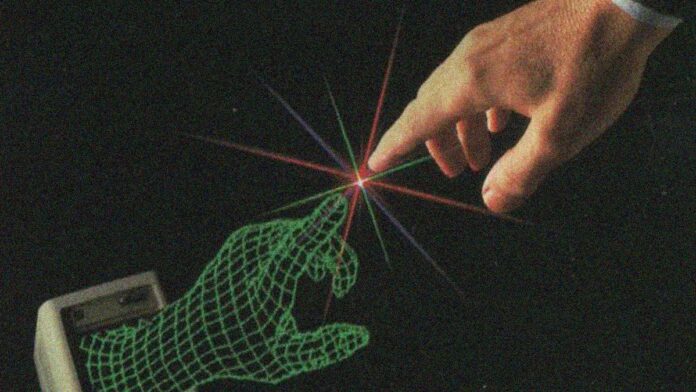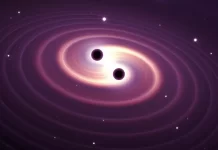Digital physics is a field of study that explores the fundamental nature of the universe using the tools of computer science and information theory. It proposes that the universe itself can be described as a computational system and that the laws of physics can be derived from fundamental principles of information and computation. This idea has gained traction in recent years, as researchers have made progress in understanding the structure of spacetime and the quantum nature of matter.
Contents
History of Digital Physics
The idea of a digital universe can be traced back to the early 1960s when physicist John Wheeler proposed the concept of “it from bit.” Wheeler suggested that the universe could be fundamentally composed of information, rather than matter and energy. He also introduced the idea of the “participatory universe,” in which observers play an active role in shaping reality through their observations and interactions.
In the 1980s and 1990s, the field of cellular automata gained popularity among computer scientists and physicists. Cellular automata are simple, discrete computational models that can simulate complex behaviors, including the growth of crystals, the spread of epidemics, and the evolution of species. Researchers such as Stephen Wolfram explored the potential of cellular automata as a foundation for understanding the laws of physics.
In the 21st century, the field of digital physics has expanded to include a wide range of topics, from quantum information theory to cosmology. Researchers have proposed new models of spacetime, explored the relationship between information and entropy, and investigated the possibility that the universe is a giant quantum computer.
Key Concepts in Digital Physics
Information and Entropy
One of the central ideas in digital physics is that information is a fundamental building block of the universe. In this view, all physical phenomena can be described as the manipulation and transmission of information. For example, the position and velocity of a particle can be encoded as a set of bits, which can be transmitted from one part of the universe to another.
At the same time, the concept of entropy plays a crucial role in digital physics. Entropy is a measure of the disorder or randomness of a system, and it can be used to quantify the amount of information needed to describe the system. In a sense, entropy is a measure of the “information content” of a system.
Quantum Information and Computation
Quantum information theory is a field of study that explores the fundamental principles of information and computation in the context of quantum mechanics. It has led to the development of new technologies such as quantum cryptography and quantum computing.
In digital physics, the concept of quantum information is particularly important. Quantum mechanics suggests that particles can exist in multiple states at the same time, a property known as superposition. This means that a quantum computer can perform certain computations much faster than a classical computer.
Many researchers in digital physics have explored the possibility that the universe itself is a giant quantum computer. They suggest that the laws of physics can be understood as the computation of information in this quantum system.
Models of Spacetime in Digital Physics
Another key area of research in digital physics is the development of new models of spacetime. Spacetime is the fabric of the universe, and it is described by the theory of relativity. However, there are still many unanswered questions about the nature of spacetime, such as its microscopic structure and its relationship to quantum mechanics.
Some researchers have proposed that spacetime is a discrete, digital structure, rather than a continuous fabric. This would mean that spacetime is composed of individual “pixels” or “bits” that interact according to simple rules. Other researchers have proposed that spacetime is an emergent phenomenon, arising from the interactions of underlying quantum degrees of freedom.
Implications of Digital Physics
The field of digital physics has many potential implications for our understanding of the universe and our place within it. Here are some of the most significant:
- New models of spacetime: If spacetime is fundamentally digital, rather than continuous, it could have profound implications for our understanding of the universe at the smallest scales. It could also open up new avenues for exploring the relationship between quantum mechanics and gravity.
- New technologies: The principles of quantum information theory and computation could lead to the development of new technologies that are far more powerful than anything we have today. Quantum computers, for example, could revolutionize the fields of cryptography and drug discovery.
- A participatory universe: The idea of a participatory universe, in which observers play an active role in shaping reality, could have philosophical implications for our understanding of consciousness and free will.
- A new perspective on the nature of reality: Digital physics could help us to see the universe in a new light, as a vast and interconnected system of information and computation. This could lead to a more holistic understanding of reality and a deeper appreciation of the complexity and beauty of the universe.
Conclusion
Digital physics is a fascinating and rapidly evolving field of study that has the potential to transform our understanding of the universe. By exploring the fundamental principles of information and computation, researchers are uncovering new insights into the nature of spacetime, quantum mechanics, and the relationship between information and physical reality. As the field continues to grow and mature, we can expect to see many exciting new discoveries and applications emerge.
Sources
- Lloyd, S. (2002). Computational capacity of the universe. Physical Review Letters, 88(23), 237901. doi: 10.1103/PhysRevLett.88.237901
- Wolfram, S. (2002). A new kind of science. Champaign, IL: Wolfram Media.
- Deutsch, D. (1985). Quantum theory, the Church-Turing principle and the universal quantum computer. Proceedings of the Royal Society A: Mathematical, Physical and Engineering Sciences, 400(1818), 97-117. doi: 10.1098/rspa.1985.0070
- Wheeler, J. A. (1990). Information, physics, quantum: The search for links. In Proceedings of the 3rd International Symposium on the Foundations of Quantum Mechanics (pp. 354-368). Tokyo: Physical Society of Japan.
- Aaronson, S. (2016). The Limits of Quantum Computers. Scientific American, 314(4), 52-57. doi: 10.1038/scientificamerican0416-52
- Fredkin, E., & Toffoli, T. (1982). Conservative logic. International Journal of Theoretical Physics, 21(3), 219-253. doi: 10.1007/bf01857727
FACT CHECK: We strive for accuracy and fairness. But if you see something that doesn’t look right, please Contact us.
DISCLOSURE: This Article may contain affiliate links and Sponsored ads, to know more please read our Privacy Policy.
Stay Updated: Follow our WhatsApp Channel and Telegram Channel.












